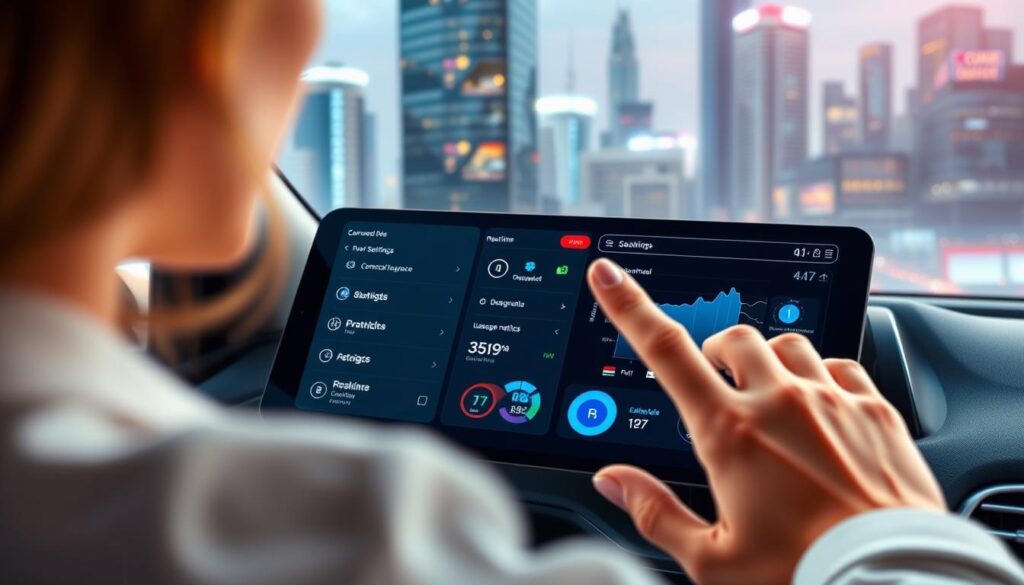- Crypto Payroll Systems: The Future of Employee Compensation?
- Proven Debt Management Strategies 2025: Slash Your Debt and Boost Your Credit Score with Proven Tips
- Guide to buying a home in 2025: How Young Adults Can Move from Renter to Homeowner
- Plan Your Dream Retirement: 2025 Guide to Digital Retirement Planning

Is Your Insurance Company Spying on You? The Truth About Usage Based Insurance Policies
Have you ever wondered if your insurance company is keeping an eye on your driving habits? With the rise of usage-based insurance, many drivers are left questioning whether their car insurance is invading their privacy.
As we explore this growing phenomenon, we delve into how insurance providers use technology to monitor driving behavior and determine premium costs. By examining the potential benefits and drawbacks, we can better understand whether these programs represent a fair way to price auto insurance or an invasion of privacy. For more insights on the latest trends in the insurance industry, you can visit top 10 trends in insurance industry.
Key Takeaways
- Understanding how usage-based insurance works and its implications.
- The role of technology in monitoring driving habits.
- Potential benefits of usage-based insurance programs.
- Concerns surrounding data privacy and security.
- The impact on premium costs for safe drivers.
What Is Usage Based Insurance?
Usage-based insurance is revolutionizing the way we think about car insurance premiums and coverage. This innovative approach uses real-time information and data about your based driving habits to determine your insurance costs and rates, rather than relying solely on traditional factors like age, location, and driving history.

The Technology Behind Telematics
Telematics technology is at the heart of usage-based insurance. It collects and transmits driving data using various systems, including GPS, accelerometers, and gyroscopes. These systems measure different aspects of your driving behavior, such as speed, acceleration, braking, and cornering, which can directly influence your car insurance premium and rate. Understanding these factors can help you choose the right policy for your coverage needs and potentially lower the amount you pay for auto insurance after an accident or during a trip.
How Data Collection Works
The data collection process involves gathering specific information about your driving habits, including the time of day, road type, and driving style. This data is transmitted to insurance companies, which use algorithms to assess your risk profile and determine your car insurance premium rate and the amount of coverage you need in case of an accident.
The Evolution of Auto Insurance Pricing
The shift toward usage-based insurance represents a significant evolution in auto insurance pricing. By linking premiums to actual driving behavior, insurers can more accurately reflect each driver’s risk profile. This approach aims to reward safe drivers with lower premiums, while encouraging riskier drivers to improve their habits.
How Insurance Companies Track Your Driving
The way insurance companies monitor your driving behavior can vary significantly depending on the technology they use. Generally, driving data is collected through a smartphone app, through systems built into your car, or through a device plugged into your car’s on-board diagnostics (OBD-II) port to help determine your car insurance rate and coverage options.
Mobile Apps vs. Plug-in Devices
Insurance companies use either mobile apps or plug-in devices to track driving habits related to car insurance. Mobile apps leverage your phone‘s built-in sensors to monitor movement, speed, and driving patterns associated with your car. On the other hand, plug-in devices connect directly to your car‘s OBD-II port to collect detailed vehicle performance data that can influence your auto insurance policies.
Built-in Vehicle Systems
Some car manufacturers have built-in telematics systems like OnStar or Ford Sync. These systems can share driving data related to car insurance with insurance companies when authorized by the vehicle owner. This method eliminates the need for additional devices or apps, making it easier for auto insurance providers to assess driving behavior.
What Specific Behaviors Are Monitored
Insurance companies track various aspects of driving behavior, including speed, acceleration, hard braking, hard cornering, miles driven, time of day, and phone use while driving. This data helps insurers assess the risk associated with a driver.
| Tracking Method | Data Collected | Convenience Level |
|---|---|---|
| Mobile Apps | Speed, acceleration, braking patterns | High |
| Plug-in Devices | Detailed vehicle performance data | Medium |
| Built-in Systems | Comprehensive driving data | High |

As seen in the table, each tracking method has its advantages and level of convenience. Understanding these differences is crucial for choosing the right usage-based insurance program for your needs.
The Data That Shapes Your Premium
The data collected from your driving habits is a key factor in determining your insurance rates. Insurers use this data to help determine your customized insurance premium.

Driving Behaviors That Lower Your Rates
Certain driving behaviors can lead to lower premium rates for car insurance. For instance, smooth acceleration, gentle braking, and driving during daylight hours are viewed favorably by insurance companies. These safe driving practices not only reduce the risk of accidents but also result in lower car insurance rates.
Red Flags That Could Increase Costs
On the other hand, certain driving behaviors can increase your car insurance costs. Frequent hard braking, rapid acceleration, speeding, and late-night driving are considered red flags. These behaviors indicate a higher risk to insurers, potentially leading to higher insurance rates.
How Traditional Factors Still Play a Role
While usage-based insurance focuses on driving behavior, traditional rating factors still influence your base premium for car insurance. Your driving record, credit score, vehicle type, and location are still considered when determining your overall insurance premium. These factors are combined with your driving data to create a comprehensive risk profile.
Privacy Concerns: Is Your Insurance Company Really “Spying”?
The rise of usage-based car insurance has sparked a heated debate about the balance between personalized premiums and personal privacy. As insurers increasingly rely on telematics to track driving behaviors, many policyholders are left wondering about the implications for their privacy.
What Happens to Your Driving Data
Once collected, your driving data is typically stored in secure databases managed by the insurance company. This data is used primarily for calculating car insurance premiums, but it may also serve other purposes, such as improving driving safety programs or detecting fraud. The duration for which this data is stored varies by company, but it’s usually retained for as long as you’re enrolled in the usage-based insurance program, and sometimes beyond.
Data Security and Third-Party Access
Insurance companies implement various data security measures to protect your driving information related to car insurance, including encryption and secure servers. However, as with any digital data, there’s always a risk of potential vulnerabilities. Some insurers may share driving data with third parties, such as data brokers or other insurance companies, though this is typically done in an anonymized and aggregated form to protect individual identities.
Legal Protections for Consumers
There are legal frameworks in place to govern the collection and use of driving data. Relevant privacy laws and regulations protect consumers by requiring insurance companies to be transparent about their data practices and to obtain consent before collecting sensitive information. Policyholders have rights regarding their driving data, including the right to know what data is being collected, how it’s being used, and the ability to request its deletion.

Understanding these aspects can help you make informed decisions about participating in usage-based insurance programs. While there are valid privacy concerns, many insurers are working to ensure that their data practices are transparent and secure.
Types of Usage Based Insurance Programs
There are primarily two types of usage-based insurance programs that insurers offer to their customers. These programs differ in how they assess driving behavior and calculate premiums. Understanding these differences is crucial for choosing the right car insurance program for your needs.
Driving Behavior-Based Programs
Driving behavior-based programs monitor how you drive, including factors like acceleration, braking, and cornering. These programs use telematics to track driving habits and translate them into risk assessments. For instance, a driver who frequently brakes hard or accelerates quickly may be considered higher risk.
Mileage-Based Programs
Mileage-based programs, on the other hand, focus on how many miles you drive rather than how you drive. These programs are simpler and often use a plug-in device or mobile app to track mileage. The premium is then calculated based on the distance traveled.

| Program Type | Driving Behavior-Based | Mileage-Based |
|---|---|---|
| Monitoring Focus | Driving habits (acceleration, braking, etc.) | Mileage (distance traveled) |
| Assessment Basis | Risk assessment based on driving behavior | Premium calculated based on miles driven |
| Typical Users | Safe drivers who want to be rewarded for their driving habits | Low-mileage drivers who want to pay for what they use |
By understanding the different types of usage-based insurance programs, you can make an informed decision about which car insurance program is best for you.
Major Insurance Companies Offering Usage Based Insurance

The landscape of car insurance is changing with the introduction of usage-based insurance by prominent insurance providers. Several major insurance companies now offer programs that can help drivers save money on their car insurance premiums by demonstrating safe driving habits. For more information on how these programs work and the potential savings, visit this link.
Comparing Discount Structures
Different insurance companies have varying discount structures for their usage-based insurance programs. For instance, Allstate’s Drivewise and Progressive’s Snapshot offer discounts based on driving behavior, while State Farm’s Drive Safe & Save provides savings of up to 30%. Understanding these structures is crucial to maximizing your car insurance rate reduction.
Sign-Up Incentives and Maximum Savings
Many insurance providers offer sign-up incentives for their usage-based insurance programs. For example, Progressive Snapshot has been known to offer an average discount of $231. Nationwide SmartRide and Allstate Drivewise offer up to 40% savings. These incentives can provide immediate rate reductions, even before your driving habits are fully evaluated.
Which Companies Might Raise Your Rates
While many companies guarantee that your rates won’t increase based on your driving data, some may. For instance, Progressive Snapshot could potentially raise your rate if your driving is deemed risky. It’s essential to understand the terms of each usage-based insurance program before enrolling to avoid any surprises.
How to Maximize Your UBI Benefits
Maximizing your UBI benefits requires a combination of driving habits, strategic enrollment, and ongoing monitoring. To get the most out of your Usage-Based Insurance program, you need to understand how your driving behaviors impact your insurance scores.
Driving Tips to Improve Your Score
To improve your UBI (Usage-based insurance) score, focus on developing safe driving habits. This includes smoother acceleration, gentler braking, and safer cornering. Avoid driving after midnight, as accidents are more common between 12 a.m. and 4 a.m. Additionally, try to drive less during periods of high traffic.
- Avoid distracted driving by refraining from multi-tasking, eating, and using your cell phone while driving.
- Use the feedback from your UBI program to identify areas for improvement and adjust your driving habits accordingly.
When to Enroll in a Program
The timing of your enrollment can significantly impact your UBI benefits. Consider enrolling during periods when you drive less or when your driving patterns are more aligned with what insurance companies reward. For example, enrolling during the summer months when you drive less can help you get a better score.
How to Monitor Your Progress
Monitoring your progress is crucial to maximizing your UBI benefits. Use the feedback and analytics provided by your insurance company through their apps or online portals to track your driving habits and identify areas for improvement. Regularly checking your UBI feedback can help you stay on track and make adjustments to maintain good driving habits.

Is Usage-Based Insurance Right for You?
Deciding whether usage-based insurance is right for you involves considering several key factors about your driving habits and insurance preferences. Before enrolling, ask yourself: Do you trust your insurance company with your driving data? Will your driving behavior help lower your premiums, or are you willing to adjust your habits for a discount?
Consider your driving patterns, including when and how much you drive. Different driver profiles may benefit differently from usage-based insurance programs. For instance, low-mileage drivers or those with safe driving habits might see significant savings on their car insurance and auto coverage.
Weigh the potential financial benefits against privacy concerns and the effort required to maintain favorable driving scores. It’s also crucial to understand how usage-based insurance might affect different types of coverage within your auto insurance policy, including liability, comprehensive, and collision coverage. By carefully considering these factors, you can make an informed decision about whether this type of insurance is right for you.
Conclusion
The rise of usage-based insurance is transforming the way auto insurers assess risk and determine premiums. By leveraging technology to track driving behavior, these programs offer personalized car insurance rates. While benefits include discounted premiums and improved driving habits, concerns about data privacy and security remain.
To make an informed decision, it’s crucial to understand what data is collected and how it’s used. As the trend toward data-driven insurance pricing grows, evaluating your driving habits and privacy preferences will help determine if usage-based insurance is right for you.
FAQ
How does my insurance company track my driving habits?
We use telematics technology, which can be a mobile app or a plug-in device, to collect data on our driving behavior, including speed, acceleration, and braking habits.
What specific driving behaviors are monitored by insurance companies?
We monitor behaviors such as rapid acceleration, hard braking, sharp turns, and speeding, as well as the time of day and location of our trips.
Can I opt-out of a usage-based insurance program if I’m not comfortable with data collection?
Yes, we can usually opt-out of a program, but this may affect our premium or policy terms.
How do insurance companies use the data collected from telematics devices or mobile apps?
We use this data to assess our driving risk and determine our premium, with safer drivers potentially qualifying for lower rates.
Are there any discounts available for enrolling in a usage-based insurance program?
Yes, many insurance companies offer sign-up incentives, discounts for safe driving, and other rewards for participating in these programs.
Can my insurance rates increase if I participate in a usage-based insurance program?
Yes, if our driving behavior is deemed high-risk, our rates may increase, so it’s essential to drive safely and monitor our progress.
How do I know if a usage-based insurance program is right for me?
We should consider our driving habits, budget, and comfort level with data collection to decide if a usage-based program is a good fit.
What happens to my driving data after it’s collected by my insurance company?
Our driving data is typically stored securely and used only for determining our premium, with some companies potentially sharing it with third-party vendors.














